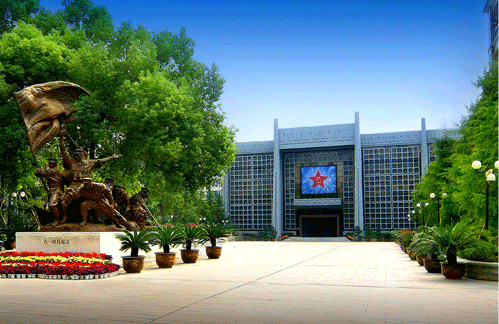Introduction
- Categories:ABOUT
- Time of issue:2019-08-17 00:00:00
- Views:0

August 1st Nanchang Uprising is an armed uprising launched by the Chinese Communist Party in Nanchang, Jiangxi on August 1st, 1927 in order to strike back against the Kuomintang authority which slaughtered the Chinese Communist Party Members and the masses as well as save the revolution. Mass murder of the Chinese Communist Party was organized by Chiang Kai-shek in Nanjing On April 12th, 1927 and Wang Jingwei in Wuhan on July 15th, 1927. Afterwards, the temporary Political Bureau of the Central Committee of the Communist Party of China decided to take advantage of the national revolutionary army controlled and influenced by the Chinese Communist Party to hold uprising in Nanchang, and Zhou Enlai was designated as the Secretary of the front committee of the leading body. The armies that were planned to participate in the uprising include the 20th army of the 2nd front army of the 4th group army, the 24th division of the 11th army, the 1st section of the 10th division, two regiments of the 25th division of the 4th army, the 1st section of the 3rd officer education group of the 5th front army and Nanchang Policemen, with over 20,000 people in total. The uprising was delayed due to the obstruction of Zhang Guotao, which was planned to launch on the evening of July 30th, 1927.
At 2 a.m., August 1st, 1927, Zhou Enlai, He Long, Ye Ting, Zhu De, and Liu Bocheng commanded the insurrectionary army to launch strikes on the Kuomintang army in Nanchang. Through more than four hours of fierce battle, the whole city was seized. On the morning of August 1st, 1927, a joint conference was held in Nanchang, and the attendees include members of the Central Committee of the Kuomintang, and representatives of parties at home and abroad. In the conference, Declaration of Members of the Central Committee was approved and the Revolutionary Committee of the Chinese Kuomintang was established. In addition, the insurrectionary army was reorganized, the original designation—the 2nd front army of the national revolutionary army was kept, and He Long was appointed as the commander in chief. For Nanchang was attacked by massive forces, the front committee decided to transfer forces to attack Guangdong so as to capture Guangzhou and launch the northern expedition according to the original policy of the Central Committee.
The insurrectionary army withdrew from Nanchang on August 3rd, 1927, and arrived at Chaozhou and Shantou in the last ten-day period of September 1927 via Ruijin and Huichang, Jiangxi, and Changting and Shanghang, Fujian. Afterwards, it was defeated by the enemy. One part of the insurrectionary army retreated to Haifeng and Lufeng and joined in the armed struggle of the peasants in Dongjiang Area. The other part of the army was led by Zhu De and Chen Yi to conduct guerrilla warfare in South Hunan. During the last ten-day period of April 1928, it arrived at Jinggangshan area and joined forces led by Mao Zedong, and the 4th army of the revolutionary army of workers and peasants was established.
Nanchang Uprising marks the beginning of armed struggle led by the Chinese Communist Party independently and establishment of the revolutionary army, which was the first time to resist the Kuomintang authority by armed forces. The remained insurrectionary army became one important part of the Chinese Workers’ and Peasants’ Red Army. On July 1st, 1933, the temporary Central Committee of the Chinese Soviet Republic decided that August 1st was the day in commemoration of the foundation of the Chinese Workers’ and Peasants’ Red Army. After the People’s Republic of China was founded, the commemoration day was renamed as the Army Day of the Chinese People’s Liberation Army.
Scan the QR code to read on your phone
Copyright 2022 Museum of August 1 Nanchang Uprising All Rights Reserved | Micro Blog of the Museum
赣ICP备15007421号 Powered by www.300.cn SEO Tag



 0791-86613806
0791-86613806

 E-mail
E-mail 